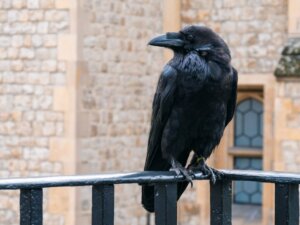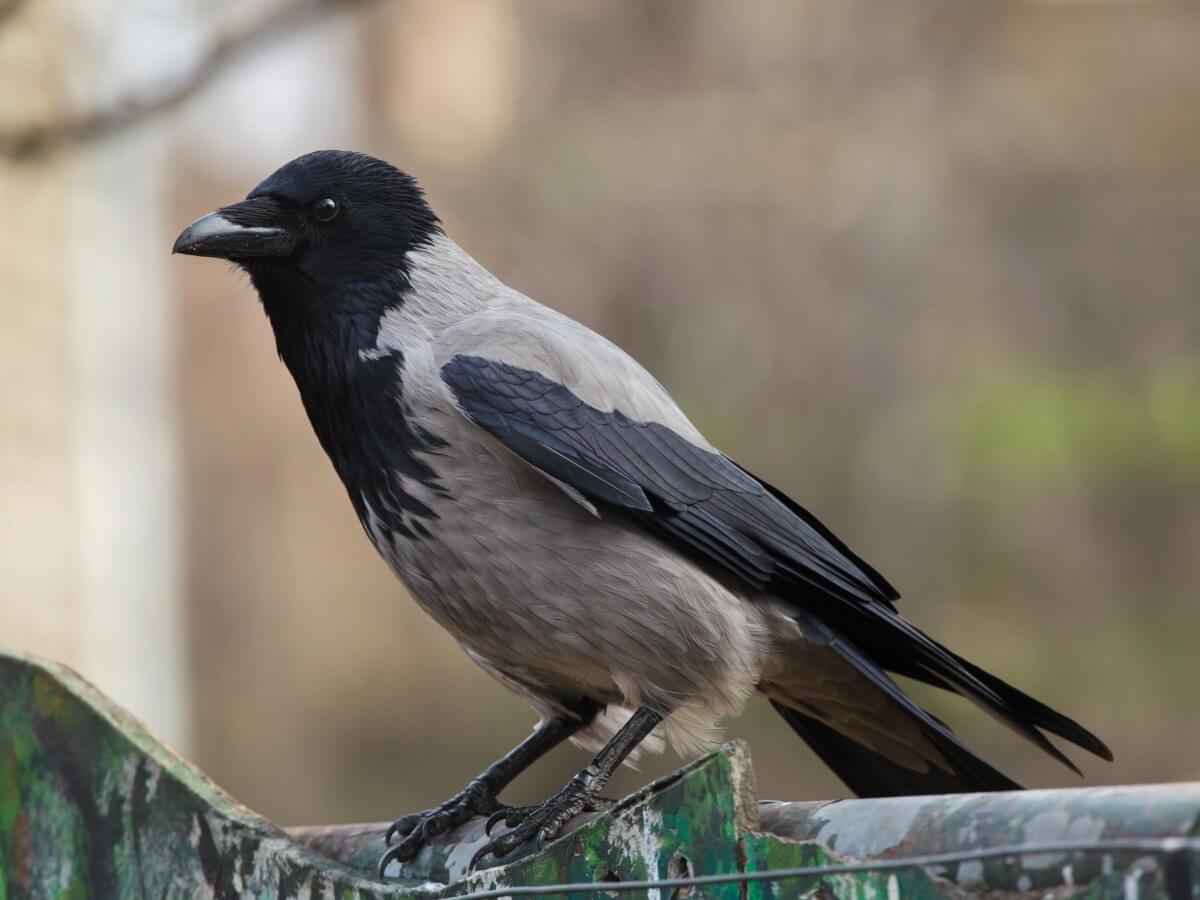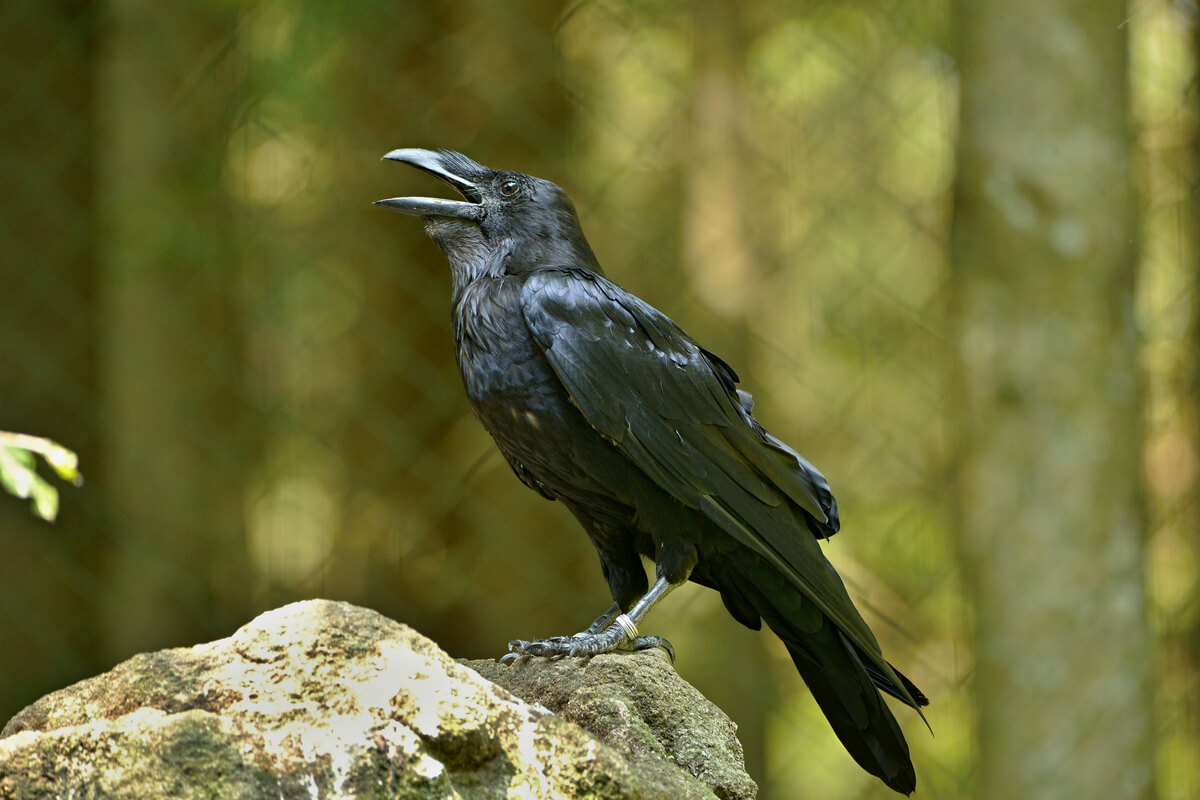10 Curiosities About Crows


Written and verified by the biologist Samuel Sanchez
The curiosities about crows go far beyond their supposed association with bad omens and their relationship with evil entities, such as witches, demons, or death itself. Their plumage, beak, and black eyes have created legends and fear throughout history, but today these birds stand out for something much more valuable: their intelligence.
In recent years, it has been shown that crows have complex learning skills, that they cooperate with each other to reach common ends, and that they are even capable of distinguishing between experienced and novice rivals. Be amazed at the intelligence of these beautiful and mysterious birds, as we tell you 10 curiosities about crows in the following article.
1. Curiosities about crows: they all belong to the same genus
Before talking about the intelligence of these birds, we need to define them from a genetic point of view. When we use the word “crow” we’re not really referring to a specific species, but rather 45 representatives of the genus Corvus, which belong to the Corvidae family.
These intimidating animals also belong to the order of the Passeriformes, so they share a group with canaries, sparrows, goldfinches, and all songbirds. The most common crow, or raven, is Corvus corax, as it’s evenly distributed throughout the Northern Hemisphere.
There are up to 8 subspecies of Corvus corax. Their physical distinctions are minimal, but the key to differentiation lies in their genes.
2. They have similar body shapes
Crows are considered medium-sized birds. Even so, there are notable differences between its representatives. The Mexican species Corvus imparatus has a maximum length of about 34 centimeters (13 inches), while Corvus crassirostris, endemic to the horn of Africa, easily reaches 70 centimeters (27 inches) and 1.5 kilograms in weight.
As far as their appearance is concerned, all species are slender and robust, with a small head that supports a very large and remarkable conical beak. The plumage is metallic black with iridescent flashes, but there are species that break this rule. For example, Corvus cornix bears almost the entire back and belly of cream tones, with black spots on the head, neck, wings, and tail.

3. Species of a cosmopolitan distribution
Crows inhabit all temperate regions of the world, with the exception of South America and some remote islands. As we said earlier, Corvus corax is the most famous species of all, as it’s found practically throughout the whole of Asia, North America, and much of Europe, as indicated by distribution maps.
Most species of crows prefer open environments. However, they can be found in practically all ecosystems, except rainforests.
4. Crows are able to use tools
Now that we’ve explained their genus, it’s certainly time to talk about these birds’ unusual intelligence. Until recently, the use of tools for personal gain was considered unique to hominids, but crows and other complex birds have shown this preconception to be wrong.
According to studies, the Corvus moneduloides species is the one that stands out the most in this area. It has been shown that this crow can make 2 types of basic tools from branches (tearing their leaves and leaving only a curved tip), in order to obtain a “hook” to collect larvae and invertebrates from the nooks of trees and the soil.
Interestingly, crows use their tools differently if they’re used on tree bark or in the substrate.
5. They’re able to distinguish the capabilities of their rivals
Recent research has shown that the intelligence of crows goes beyond their ability to make tools, as they behave differently depending on the skills of their rivals. In this scenario, they’re able to defend their food in one way or another based on the behavior observed in their antagonists.
In this aforementioned experiment, we can observe how the crows as storers (who store their food) behave in front of the pilfers (who try to steal the food). Surprisingly, those who store their food remember those who have stolen from them in the past, and act with more suspicion and caution against more experienced thieves.
6. Some crows can fish!
One of the most unexpected curiosities of crows is that some species (such as Corvus cornix) are capable of “fishing”. Although they don’t use tools as such to do so, they’ve been able to associate the presence of food with the arrival of fish to the surface. For this reason, they throw pieces of bread that are on land into the water of the lakes, and when a hungry fish arrives, they take the opportunity to hunt it.
7. A varied diet
Crows are primarily scavengers. They eat a large number of foods of animal origin, including arthropods, amphibians, small mammals, birds, reptiles, and carrion. They’re also famous for feeding on the newborns of many species and on the worms and invertebrates themselves that feed on dead meat.
In addition to meat of animal origin, they also supplement their diet with grains, seeds, and other plant compounds. A curiosity of the Australian crows is that they have even learned to hunt the toxic toads that invade the region (Rhinella marina), turning them over and accessing their insides without coming into contact with their poisonous glands.
8. They have an excellent memory
Another of the curiosities about crows is that they remember past events, at least in the medium term. They store their food in hidden areas and, some time later, they’re able to remember the hiding place and return to it accurately. Not only that, but it has also been shown that they’re capable of recognizing human faces and relating them to specific behaviors.
In addition, these birds are capable of transmitting their knowledge to their offspring.
9. Crows are very vocal animals
As indicated by the Animal Diversity Web portal, crows make use of their tones to transmit a wide variety of messages. The Corvus corax species is the best example of this, as it has been recorded to use 15 to 33 different types of squawks depending on the situation. These birds emit ringtones, alarm and safety sounds, and sounds to denote territorial delimitation.
In addition to their vocal skills, crows also use their plumage and physical shape to transmit messages, especially when another specimen usurps their territory. They relate to their environment through sounds, but they also make use of visual, chemical, and tactile elements.
10. They’re not in danger of extinction
Most crows are listed in the “Least Concern (LC)” category on the IUCN Red List. This is because they’re extremely intelligent and generalist animals, which is why they’ve adapted well to the human environment and anthropic modifications. However, this doesn’t mean that they don’t require global and regional protection.
For example, the species Corvus hawaiiensis has recently been declared extinct in the wild. Deforestation and land transformation have been vital for its population decline, although infectious agents (such as avian malaria) also explain its disappearance. Crows are smart, but not invincible.

As you may have seen in these lines, there are many curiosities about crows. They stand out for their unusual intelligence, but it’s also interesting to note their nutritional habits and communication skills, among many other things.
We recommend that you find out more about them through videos and documentaries online, as they’re truly fascinating animals, as well as being studied extensively for their cognitive abilities.
All cited sources were thoroughly reviewed by our team to ensure their quality, reliability, currency, and validity. The bibliography of this article was considered reliable and of academic or scientific accuracy.
- Loretto, M. C., Fraser, O. N., & Bugnyar, T. (2012). Ontogeny of social relations and coalition formation in common ravens (Corvus corax). International journal of comparative psychology/ISCP; sponsored by the International Society for Comparative Psychology and the University of Calabria, 25(3), 180.
- Seed, A. M., Clayton, N. S., & Emery, N. J. (2008). Cooperative problem solving in rooks (Corvus frugilegus). Proceedings of the Royal Society B: Biological Sciences, 275(1641), 1421-1429.
- Fritz, J., & Kotrschal, K. (1999). Social learning in common ravens, Corvus corax. Animal Behaviour, 57(4), 785-793.
- Bugnyar, T., & Heinrich, B. (2005). Ravens, Corvus corax, differentiate between knowledgeable and ignorant competitors. Proceedings of the Royal Society B: Biological Sciences, 272(1573), 1641-1646.
This text is provided for informational purposes only and does not replace consultation with a professional. If in doubt, consult your specialist.